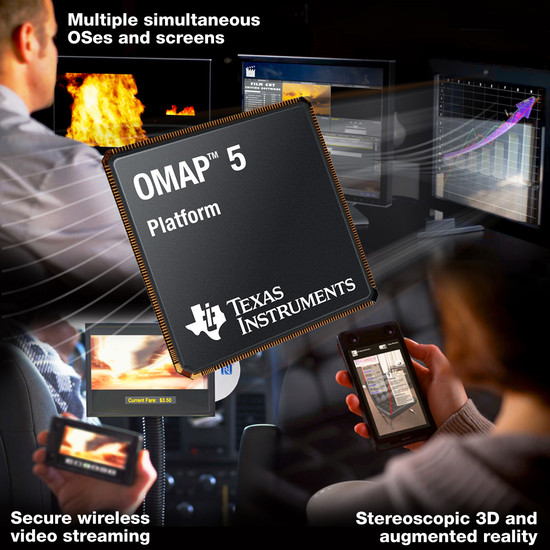Texas Instruments has, just in time for Mobile World Congress 2011, presented its next generation mobile application processor OMAP 5. OMAP 5 builds on ARM’s coming “Eagle” architecture and houses two Cortex-A15 CPU cores that can be clocked up to 2.0 GHz, which is possible thanks to a new and more efficient 28nm technology.
TI was one of the first to acquire a license for ARM’s Eagale architecture and it looks to be one of the first to get a processor out on the market. Cortex-A15 cores not only operate at higher clock frequencies they are also faster at the same clock frequency, compared to the current architecture. TI claims that a 2 GHz Cortex-A15 core offers three times the performance of a 1 GHz Cortex-A9 core.
With new 28 nanometer technolgoy TI has also been able to squeeze in more cache and from 1MB L2 cache in the Cortex-A9 OMAP 4, OMAP 5 will bring double that, 2MB.
With a new graphics circuit from Imagination Technologies based on PowerVR SGX 544 the graphics performance will be a lot better too. TI doesn’t reveal how many GPU cores OMAP 5 comes with, but there should be a big boost in performance over current generation where also the performance per GPU core has been improved.
The 28 nanometer OMAP 5 applications processors carry on the OMAP family tradition of delivering significant increases in performance and functionality, while lowering power consumption compared to their predecessors. Specifically, they offer up to 3x processing performance and five-fold 3D graphics improvement, yet provide a nearly 60 percent average power reduction compared to a sample user experience on the OMAP 4 platform.
TI primarily focuses on two models of the OMAP 5 series, 5430 and 5432. The difference is that OMAP 5430 is a smaller PoP circuit (Package on package) at 14x14mm with LPDDR2 memory support. While OMAP 5432 supports DDR3/DDR3L memory in a bigger BGA circuit (Ball grid Array) at 17x17mm.
The test manufacturing of OMAP 5 will start in the latter half of 2011 and the first products should be out in 2012. It will then bring support for four camera sensors, three displays and recording of 1080p60 video.

















